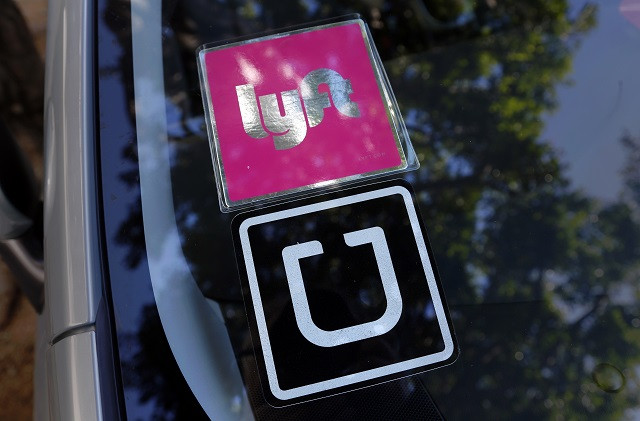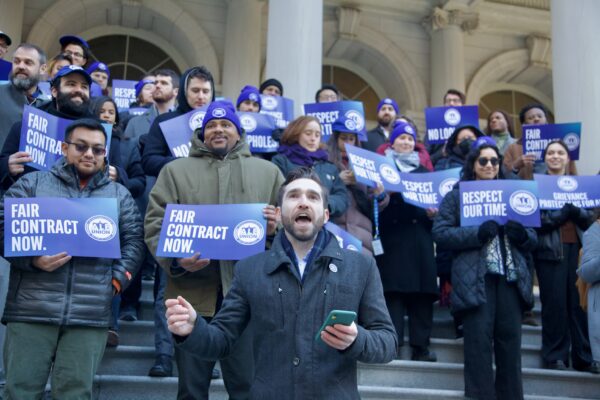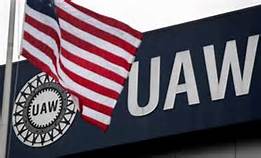
NEW YORK, N.Y.—Uber will begin logging its New York drivers out of the app if they don’t get to a “high demand zone” within 30 minutes of dropping off a fare, the company announced in an email to drivers Sept. 13.
“If you’re trying to drive in an area where there isn’t enough rider demand at that time, you will not be able to go online,” the message said. “However, you’ll be able to access a map (coming to your app soon) that will give you real-time information indicating where there is higher rider demand.”
The news drew ire from the two rival unions representing app-based drivers in the city. “Uber and Lyft deactivate drivers, permanently, every day without notice. Only when they want to scare drivers into opposing necessary regulations does Uber stage a public announcement of its intent to log off drivers,” New York Taxi Workers Alliance executive director Bhairavi Desai said in a statement. “Just as the company did in California, Uber is now spreading fear and disinformation to New York drivers, attempting to convince workers that rules protecting their livelihoods are to blame for Uber’s greedy policies.”
The Independent Drivers Guild accused Uber and Lyft—which began a similar policy in June—of “manipulating access to its app for New York City drivers, in a move that violates the intent of the city’s pay rules, including blocking access to the app for some drivers and requiring them to drive to areas with more demand in order to log on.”
The IDG has scheduled a “slow vehicle procession over the Brooklyn Bridge and up to Gracie Mansion” for 8 a.m. Sept. 17 to demand that the city government “stop the apps from violating the pay rules.”
An Uber spokesperson told LaborPress that the move was intended to increase occupancy rates, because the city’s minimum wage of $17.22 an hour after expenses is based on fares being pegged to the percentage of time the cab is occupied. That “creates an incentive for us to keep our vehicles utilized as much as possible,” and an unintended consequence is that “it creates an incentive for app companies to limit access to drivers.”
He said the company believed that 30 minutes was enough time to drive to a busier area.
The company’s hand was forced, he added, by Lyft’s logging-off policy. If that increased Lyft’s occupancy rates, he explained, it would lure customers by lowering fares, and if disgruntled drivers then switched to Uber, that would lower Uber’s occupancy rate and drive up fares.
“This is exactly what we told the Taxi and Limousine Commission would happen,” IDG executive director Brendan Sexton said in a statement. “If an app company simply stops counting the miles and minutes when a driver is waiting for dispatch or traveling to their next pick up location by logging drivers out of the app,” it said in a letter sent last June, “drivers are still driving those miles and waiting those minutes”—but if they’re “not counted toward the utilization rate, it means drivers aren’t getting paid.”
“Until we took needed action last year, it has been Uber and Lyft’s business model to oversaturate the market while promising drivers that they could succeed despite these companies’ stacking the deck against them,” TLC Acting Commissioner Bill Heinzen responded in an email to LaborPress. “TLC and City Council put in place smart policies to address the problems these companies created, and they are finally being forced to experiment with ways to run their businesses in an environment of accountability. These companies must be reminded that drivers are crucial to their continued success.”
The TLC said that for-hire vehicle ridership has increased all over the city outside Manhattan this year, at the highest rates in Staten Island and the Bronx. It added that the new regulations are necessary to stop the “race to the bottom” caused by having too many drivers competing for fares.
Desai said that ironically, the new policy is undermining Uber and Lyft’s arguments that their drivers are independent contractors and not employees, because they’re “exerting more control over drivers in their quest to look less like employers.”
“The truth is that no one but Uber has control over when drivers can be on the app,” she added. “The same goes for Lyft, which already implemented the same policy of logging drivers off the app when demand is low.”
The Uber spokesperson declined to comment on that issue.
Uber chief legal officer Tony West, responding Sept. 11, to the California Legislature passing a bill that defines independent contractors as those doing work “outside the usual course of the hiring entity’s business,” said in a statement that the company would refuse to classify drivers as employees. Drivers’ work is “outside the usual course of Uber’s business,” he argued, because it’s not a taxi company, it’s “a technology platform for several different types of digital marketplaces.”
That echoes an argument used in another era of technological advances. When commercial radio emerged in the early 1930s, broadcasters resisted paying royalties to the musicians and composers whose records they were playing. Some claimed that they were not broadcasting music, but “electrical energy.”



